Qualitative research with QandR
Focus groups

We have a long-standing cooperation with I&O research, who are using QandR on a regular basis in their qualitative research. This was done already before the Corona crisis during bigger public meetings and focus group sessions that they organise, but when the world locked down I&O Research was one of the first partners to offer QandR in online sessions as well.
“QANDR enables us to make the group discussion more dynamic. It allows the moderator to accommodate a wider range of opinions, by first asking for a response and then for an explanation. People are more evenly given a chance to speak. QANDR also renders the discussion more playful, making it more fun for everyone.”
Peter Kanne, senior advisor I&O Research
The kick-off of our collaboration took place well before the Corona crisis, in 2017 during a debate on the Dutch elections. The debate was organised by I&O Research and the organisation More Democracy in the top floor conference room of the UP building in Amsterdam.
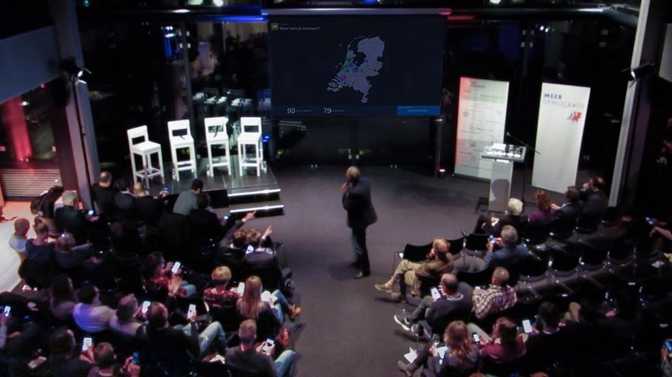
Discussion leader Niesco Dubbelboer used QANDR in several ways to create interaction with the audience of ninety. At the start of the debate the pointer was used to visualise the places of residence of the people in the audience on a map of the Netherlands. Niesco then used the same method to ask the audience to indicate their political orientation inside a quadrant with left-right and progressive-conservative dimensions.
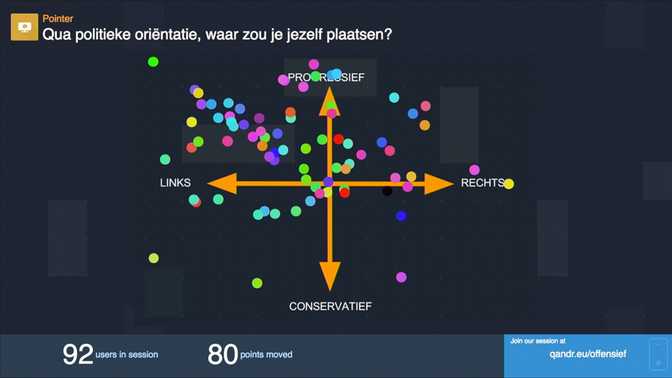
The evening featured a debate between Ancilla van de Leest from the Piracy Party and Bart Nijman from Geenpeil, both newcomers on the Dutch political party landscape. In this debate the pointer was used twice to indicate which of the speakers the audience felt had the best arguments.
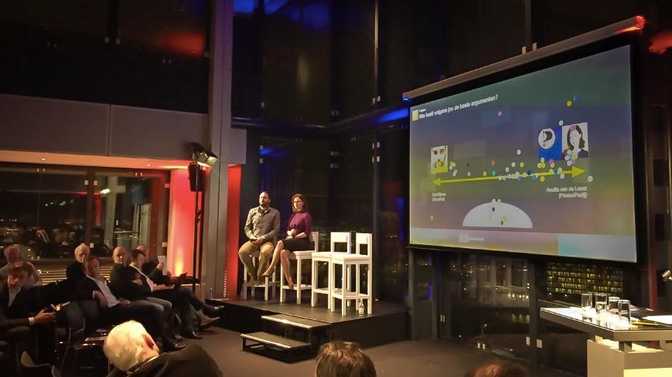
In the second part of the evening Niesco used a QANDR poll to find out from the audience whether they believe the current political model should be adjusted with extra democratic tools like the referendum or a directly elected mayor. It was interesting to see how audience opinions influenced the discussion on stage and how some people raised their voice when they felt the visualisation of alternative models (again a pointer) did not contain all the options they wanted.
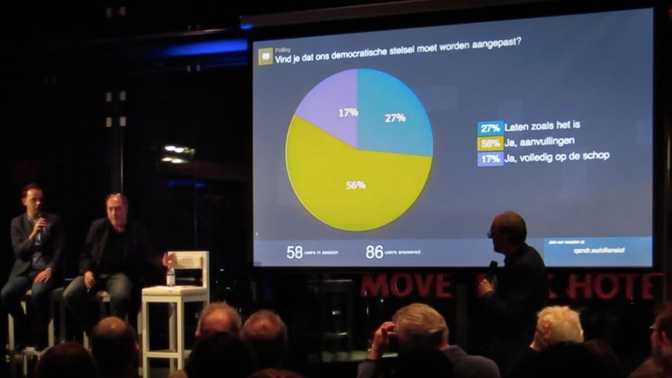
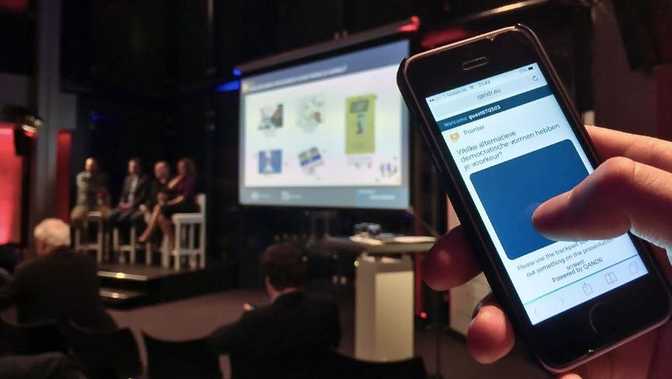
All in all it proved to be quite a successful evening, with the application being able to capture the viewpoints of the ninety people in the room, and audience involvement clearly providing additional focus for the discussion on stage. A very nice example of how a hundred-odd smartphones, instead of being a distraction, can help to create a more focused discussion. Click here to see a pdf with more impressions of the evening.
I&O Research has successfully employed QANDR in larger groups, like this debate on the Dutch elections in March 2017. However, QANDR particularly comes into its own in smaller groups, like the focus groups that I&O Research uses regularly.
Both municipalities and consulting firms use QANDR in social research. Read more about this on our page about citizen participation.